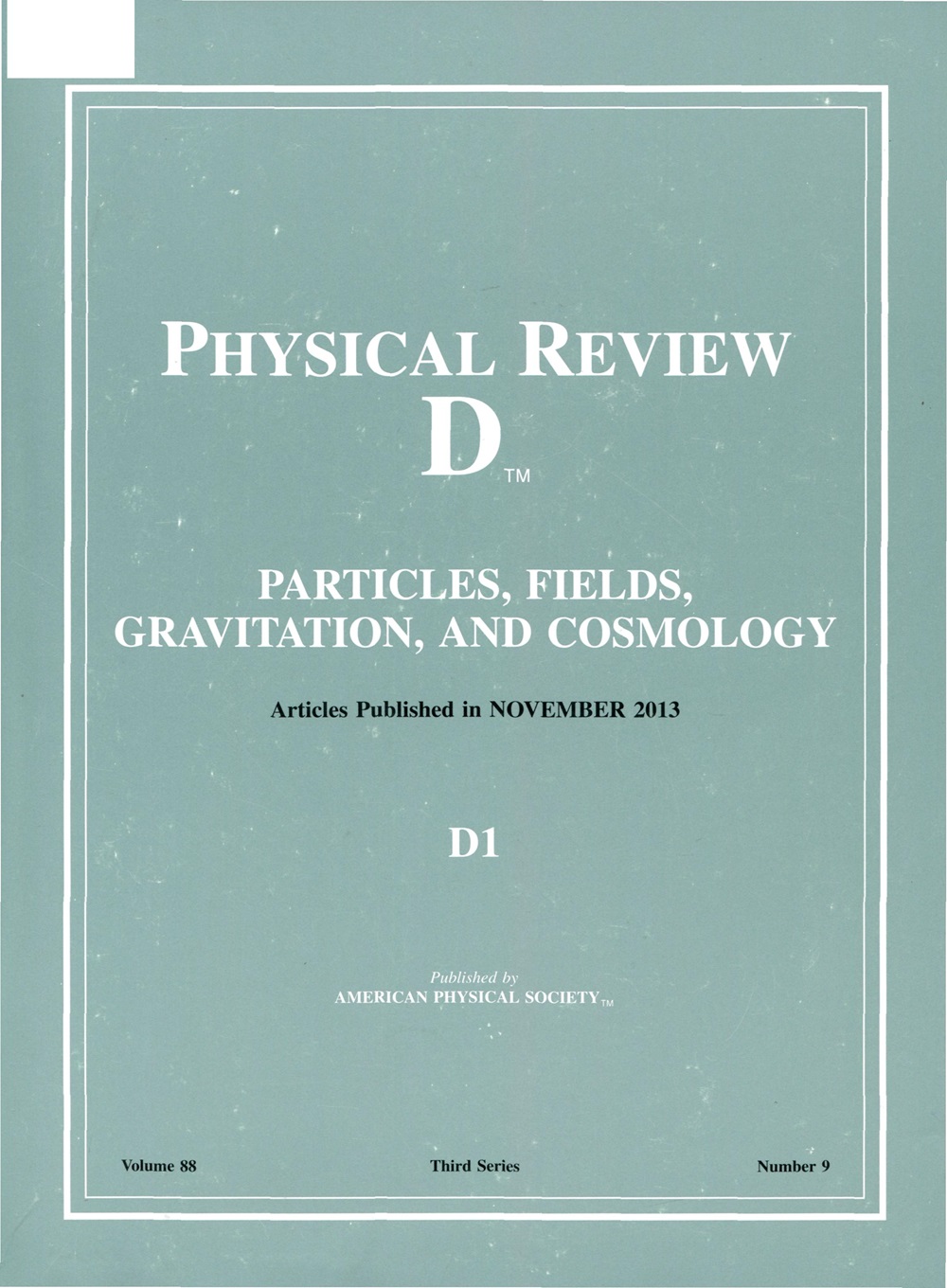Thermonuclear diversity and the Hubble tension
IF 5.3
2区 物理与天体物理
Q1 Physics and Astronomy
引用次数: 0
Abstract
Homogeneity is the hallmark of standard candle-based cosmology investigations. Thermonuclear supernovae (Type-Ia, SNeIa) violate this essential requirement if they develop along multiple evolutionary pathways. In this work, the impact of thermonuclear diversity on cosmological parameter constraints is quantified using Pantheon+, one of the largest ensembles of SNeIa compiled to probe cosmology to date. Evidence of diversity is encoded in supernova light curves. Pantheon+ is shown to be diverse, with features indicative of multiple thermonuclear subclasses. Diversity driven systematic effects have been quantified on a supernova-by-supernova basis; event selections based on light curve derived metrics were subsequently used to characterize diversity dependent trends and limit their impact. A diversity mitigated estimate of the Hubble-Lemaître parameter, H0=67.9±0.8kms−1Mpc−1 (68% C.L.), was obtained by reanalyzing Pantheon+. The Hubble tension, an apparent disparity between early and late Universe determinations of热核多样性和哈勃张力
同质性是标准烛光宇宙学研究的标志。热核超新星(Ia 型,SNeIa)如果沿着多种演化路径发展,就会违反这一基本要求。在这项工作中,我们利用 "Pantheon+"来量化热核多样性对宇宙学参数约束的影响。"Pantheon+"是迄今为止为探测宇宙学而编制的最大 SNeIa 组合之一。多样性的证据被编码在超新星光曲线中。Pantheon+ 显示出多样性,其特征表明存在多个热核亚类。在逐个超新星的基础上对多样性驱动的系统性影响进行了量化;随后根据光曲线得出的指标对事件进行了选择,以确定多样性依赖趋势的特征并限制其影响。通过重新分析 "Pantheon+",得到了哈勃-勒梅特参数的多样性减缓估计值:H0=67.9±0.8kms-1Mpc-1(68% C.L.)。哈勃张力,即早期宇宙和晚期宇宙确定的 H0 之间的明显差异,在考虑了 SNeIa 的不同热核情况后,从 ∼5σ 缓解到 <1σ。Pantheon+的多样性减弱子集也显示出∼3.4σ偏好暗能量状态方程参数(w0,wa)=(-1.084±0.180,-2.066±0.675)的平坦w0waCDM宇宙学。此外,还提出了一种由统计不确定性而非系统不确定性主导的精确SNeIa衍生宇宙学推断策略。 美国物理学会出版 2025
本文章由计算机程序翻译,如有差异,请以英文原文为准。
求助全文
约1分钟内获得全文
求助全文
来源期刊

Physical Review D
物理-天文与天体物理
CiteScore
9.20
自引率
36.00%
发文量
0
审稿时长
2 months
期刊介绍:
Physical Review D (PRD) is a leading journal in elementary particle physics, field theory, gravitation, and cosmology and is one of the top-cited journals in high-energy physics.
PRD covers experimental and theoretical results in all aspects of particle physics, field theory, gravitation and cosmology, including:
Particle physics experiments,
Electroweak interactions,
Strong interactions,
Lattice field theories, lattice QCD,
Beyond the standard model physics,
Phenomenological aspects of field theory, general methods,
Gravity, cosmology, cosmic rays,
Astrophysics and astroparticle physics,
General relativity,
Formal aspects of field theory, field theory in curved space,
String theory, quantum gravity, gauge/gravity duality.
 求助内容:
求助内容: 应助结果提醒方式:
应助结果提醒方式:


